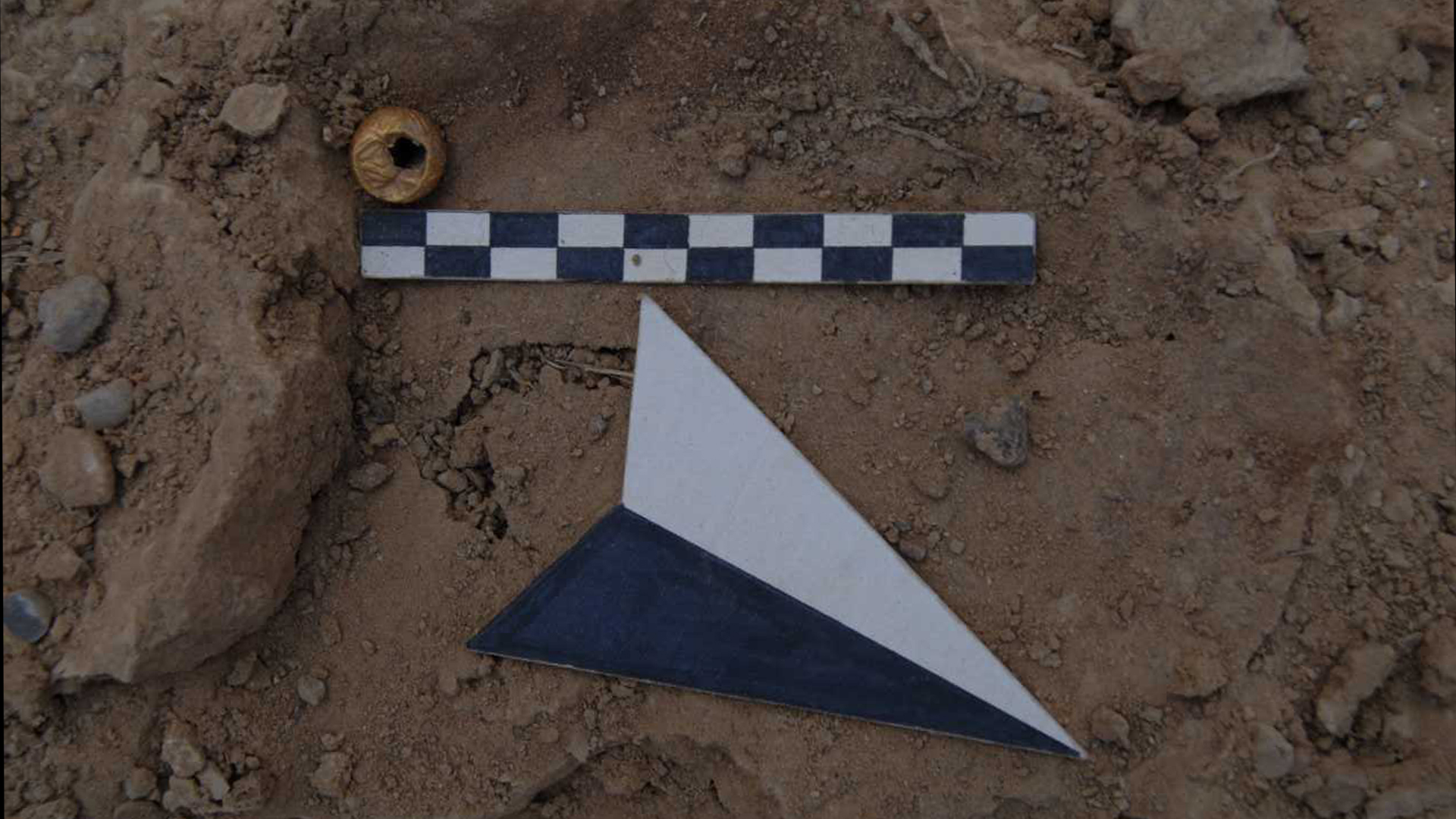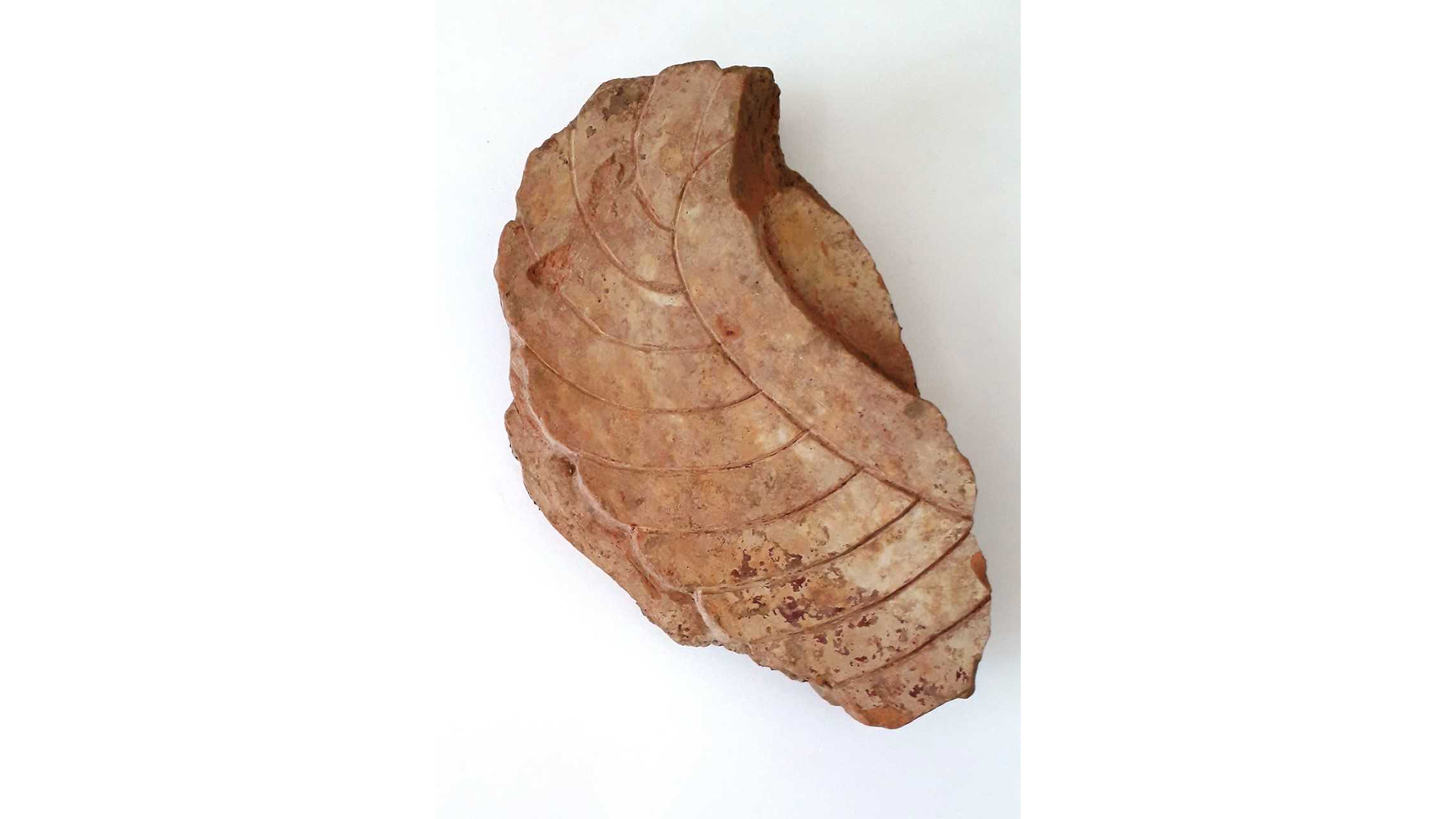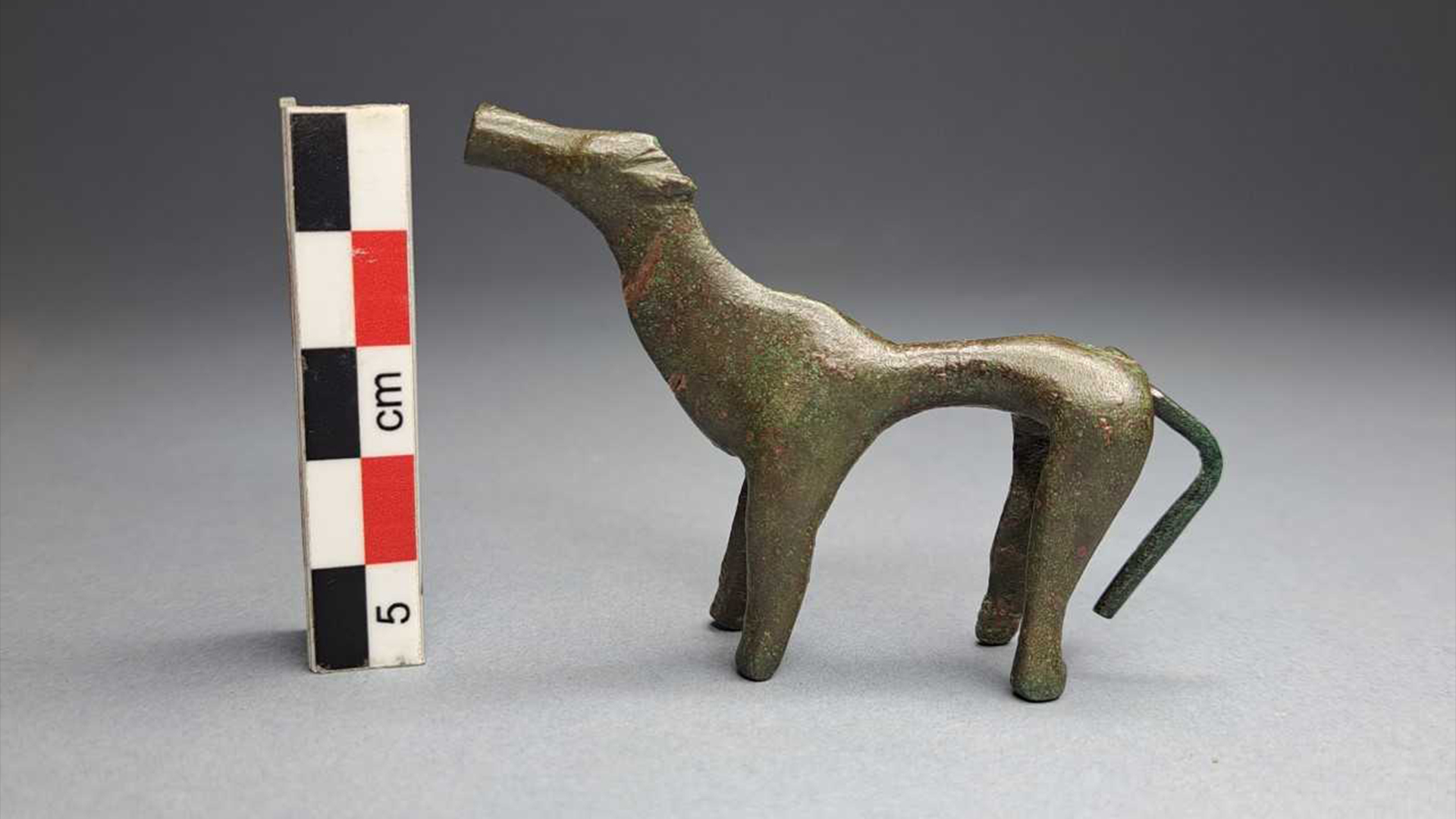2,800-year-old figurines unearthed at Greek temple may be offerings to Poseidon
Excavation of an ancient Greek temple has yielded a variety of figurines, possibly offerings to Poseidon.

Archaeologists excavating a 2,800-year-old temple at a sanctuary in Greece have uncovered several artifacts, including figurines of a dog, a woman and a snake, according to the Greek Ministry of Culture.
Some of these figurines may have been used as votive offerings, or gifts to the gods, intended for Poseidon, a Greek god of the sea.
The sanctuary, dedicated to Poseidon, is located in the ancient city of Elikis (also known as Helike) on the northern coast of the Peloponnese in Greece. In addition to the artifacts, the archaeologists analyzed sediments at the site, finding that the sanctuary flooded several times around 2,800 years ago, they said in a translated statement. Eventually, the sanctuary fell into disrepair when Elikis was destroyed in an earthquake and tsunami that occurred more than 2,300 years ago.
Related: Roman-era statues of Aphrodite and Dionysus unearthed in Turkey
The discovered artifacts include a bronze figurine that appears to be a dog and a clay figurine of a woman. They also found a snake head crafted out of bronze, a clay wing that may have been part of a sphinx or mermaid, and part of a gold necklace.
Related: 31 ancient temples from around the world, from Göbekli Tepe to the Parthenon
These artifacts may have been used as offerings to Poseidon and any other gods that may have been worshipped in the temple, Anastasia Gadolou, director general of the Archaeological Museum of Thessaloniki, who is overseeing the excavation of the site, told Live Science in an email.
Get the world’s most fascinating discoveries delivered straight to your inbox.



While the artifacts may have been used as offerings, any deeper understanding of their religious purpose — for instance, why a dog-shaped figurine was used — is uncertain. "A thorough study taking into consideration all evidence [derived] from the archaeological strati is more than essential," Gadolou said.
The archaeologists have been excavating the sanctuary for nearly 20 years. Its discovery and association with Poseidon were noted in a series of papers published between 2011 and 2022. Ancient texts say that there was a sanctuary dedicated to Poseidon at this site and the discoveries at the site support this identification, archaeologists noted in the papers.

Owen Jarus is a regular contributor to Live Science who writes about archaeology and humans' past. He has also written for The Independent (UK), The Canadian Press (CP) and The Associated Press (AP), among others. Owen has a bachelor of arts degree from the University of Toronto and a journalism degree from Ryerson University.



